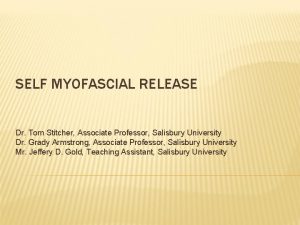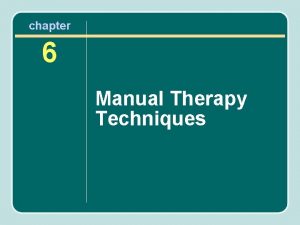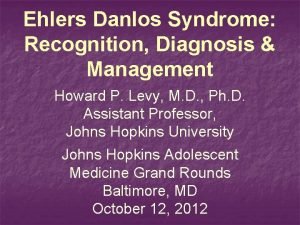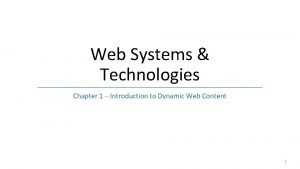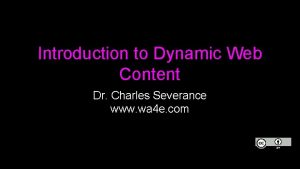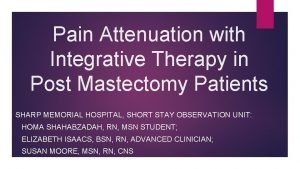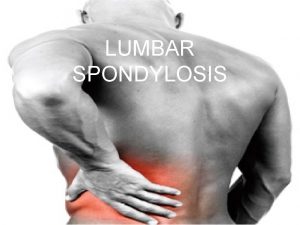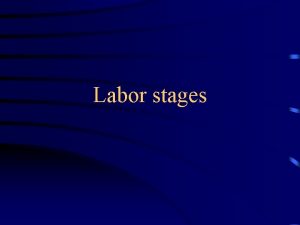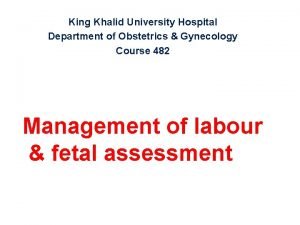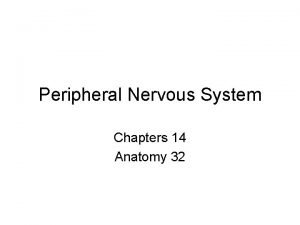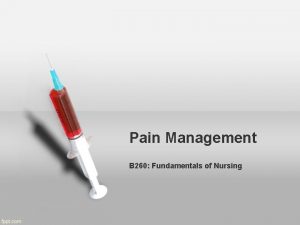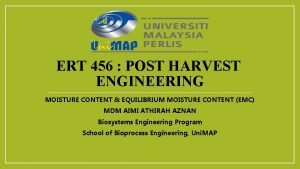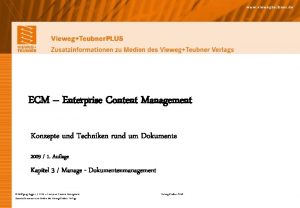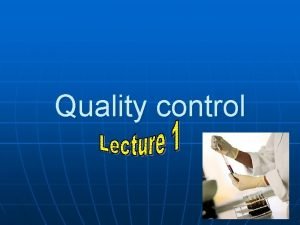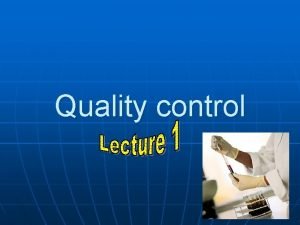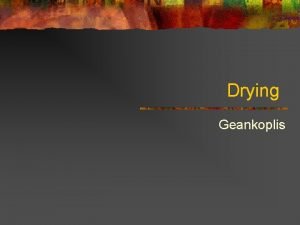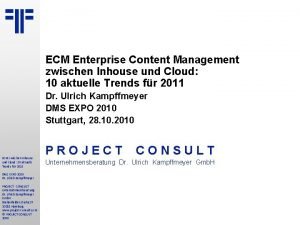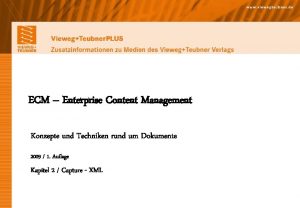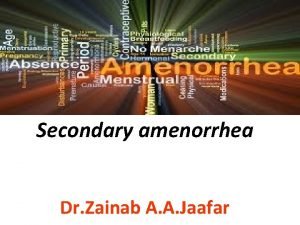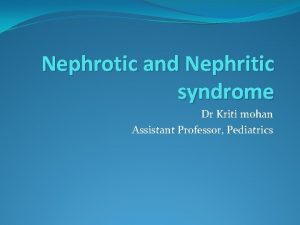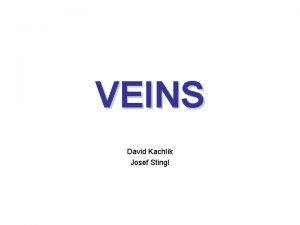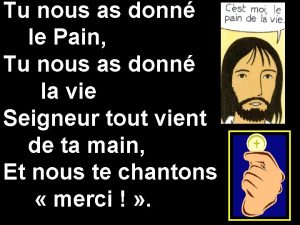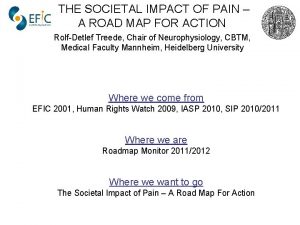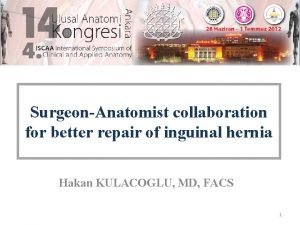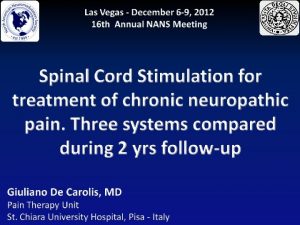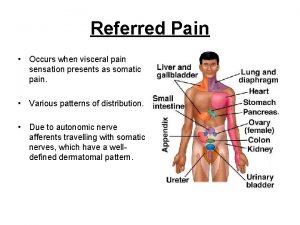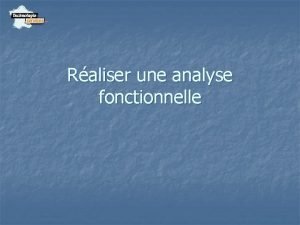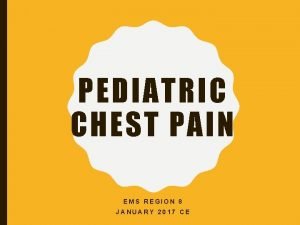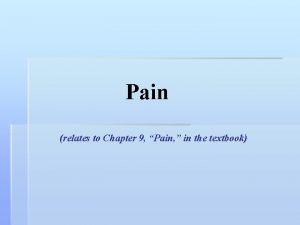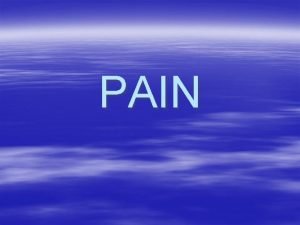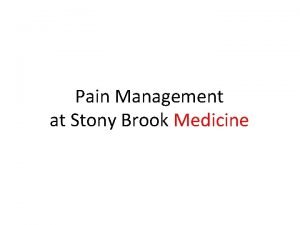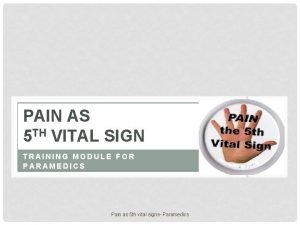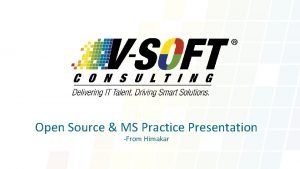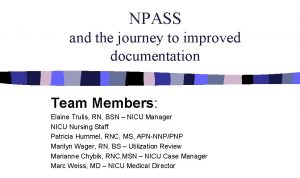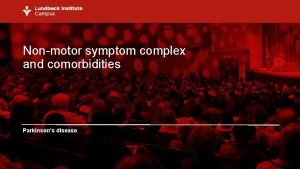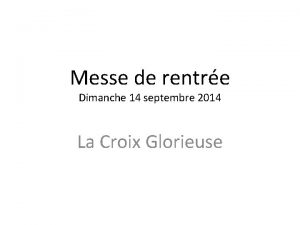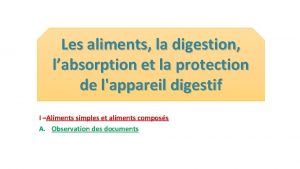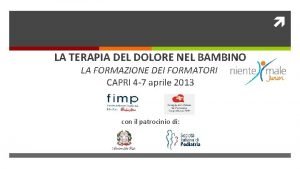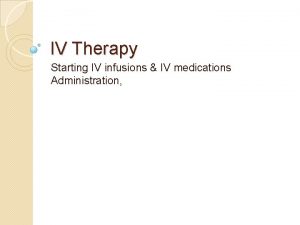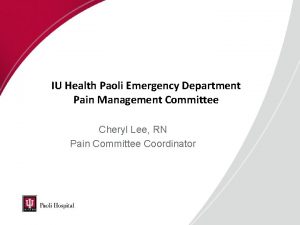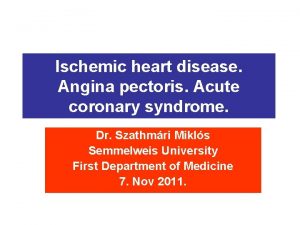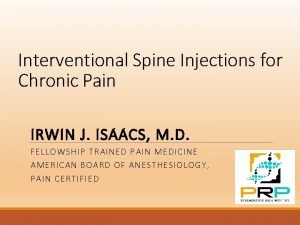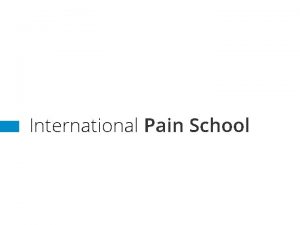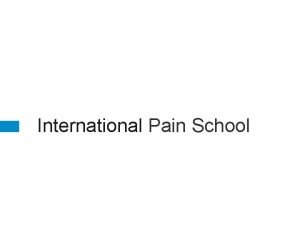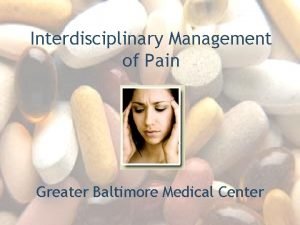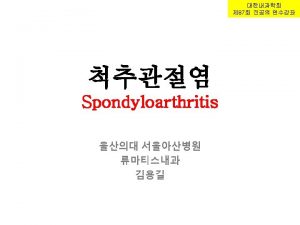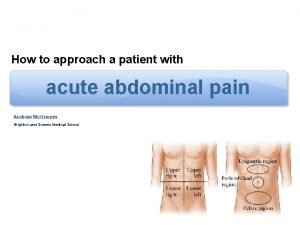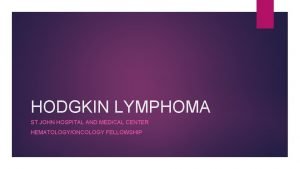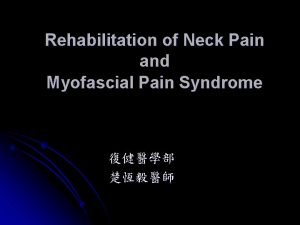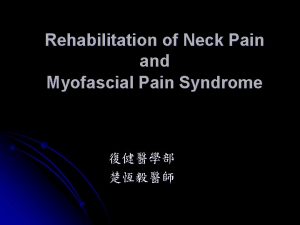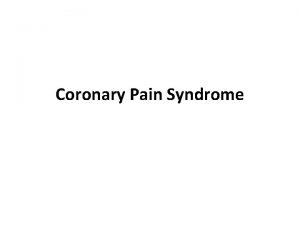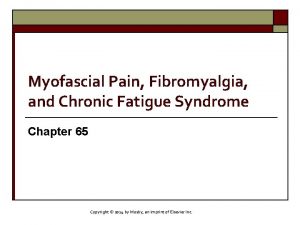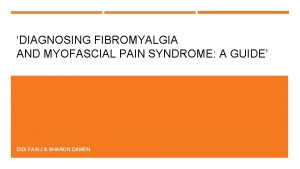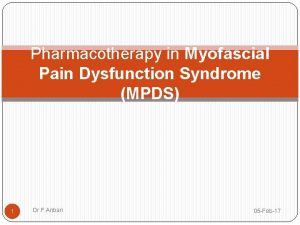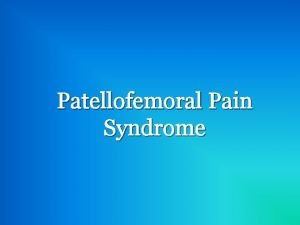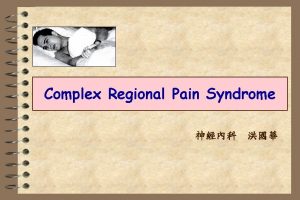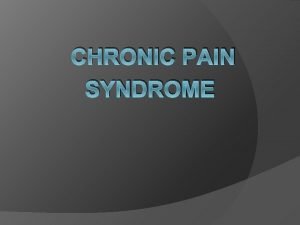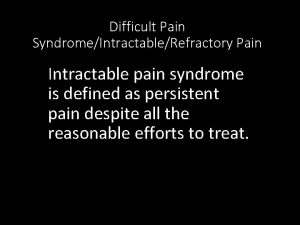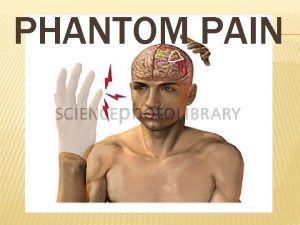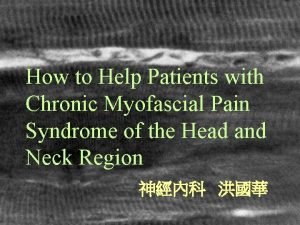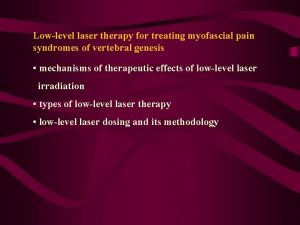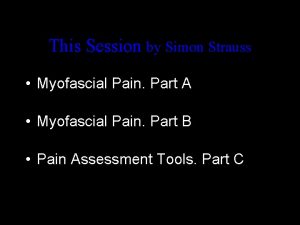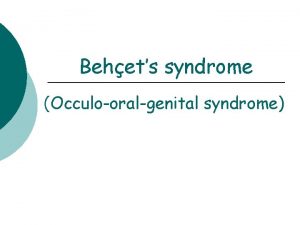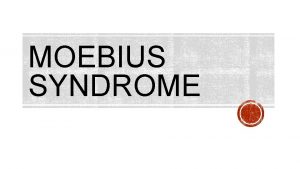An Introduction to Myofascial Pain Syndrome Content Definition











































































- Slides: 75

An Introduction to Myofascial Pain Syndrome 神經內科 洪國華

Content • • Definition and examples Clinical characteristics Pathophysiology Clinical importance Diagnosis Treatment Perpetuating Factors

Myofascial Pain syndrome • General definition: A regional pain syndrome of any soft tissue origin • Specific definition: The sensory, motor and autonomic symptoms caused by myofascial trigger points

Example 1: Referred pain patterns and location of corresponding trigger points in the right infraspinatus muscle


Compression test to test for cervical radiculopathy

The Spurling test to test for cervical radiculopathy

Hand-to-shoulder blade test to test the ROM of infraspinatus

Myofascial trigger points at right infraspinatus muscle

Example 2: Referred pain patterns and location of corresponding trigger points in the right gluteus minimus muscle


Straight leg raising test to test for sciatica


Myofascial trigger points at right gluteus minimus muscle

Categories of Trigger Points • Active Tr. Ps produce a familiar symptom when the Tr. P is digitally compressed • Latent Tr. Ps produce characteristics of a Tr. P but no spontaneous pain • An active key Tr. P in one muscle can induce an active satellite Tr. P in another muscle

Key Tr. Ps Satellite Tr. Ps (prone to develop in muscles within pain reference zone of key Tr. Ps)

Pain Complaint • Poorly localized, regional, aching pain in subcutaneous tissues, including muscles and joints • More likely to develop in sedentary workers who are prone to intermittent orgies of vigorous physical activity

Neurologic dysfunction • Sensory: Numbness or paresthesia • Proprioception: Imbalance, dizziness • Autonomic: Abnormal sweating, pilomotor activities • Motor: Spasm, weakness, loss of coordination and decreased work tolerance • Sleep disturbance

CNS interactions with a Tr. P

Physical Findings • • • Taut band tender nodule Recognition of familiar symptoms Referred sensory symptoms Local twitch response Limited range of movement





Central Vs Attachment Tr. Ps




Energy Crisis Hypothesis Initial Sustained Calcium Release from SR Failed Reuptake of Calcium into SR Sustained Sarcomere Contracture Increased Metabolism Local Ischemia Energy Crisis


Prevalence of Trigger Point Pain

Pectoralis Major

MFP syndrome of Serratus Posterior Superior

Rectus Abdominis

Mc. Burney’s Point

Dysmenorrhea

Belch Button External Oblique Abdominis

Lateral Abdominis LLQ & Groin Pain Causes Diarrhea

Extensor Digitorum

Temporalis

Sternocleidomastoid

The 3 Directions of Referred Pain

Referred Pain • Referred at least partly in peripheral direction is most common (85% of patterns) • 48% referred only in direction of periphery • 20% both central & peripheral referral • 17% both local & peripheral referral • 10% only a local pattern • 5% refer only in a central direction

Criteria for Identifying a Tr. P Essential Criteria • Taut band palpable • Exquisite spot tenderness of a nodule in a taut band • Patient’s recognition of current pain by pressure on the trigger point • Painful limit to full stretch range of motion

Criteria for Identifying a Tr. P Confirmatory Observations • Visual or tactile identification of local twitch response (LTR) • Imaging of a local twitch response induced by needle penetration of tender nodule • Pain or altered sensation (in the distribution expected) on compression of tender nodule • EMG demonstration of spontaneous electrical activity

Trigger Point Release • Spray and Stretch • Voluntary Contraction and Released Methods • Trigger Point Pressure Release • Deep Stroking Massage

Sequence of steps to use when stretching and spraying any muscle for myofascial trigger point

Neural pathway to explain effectiveness of spray and stretch

Trigger Point Release • Spray and Stretch • Voluntary Contraction and Released Methods • Trigger Point Pressure Release • Deep Stroking Massage

Accessory Techniques • • • Phased Respiration Directed Eye Movement Biofeedback Heat and Cold Iontophoresis and Phonophoresis

Modalities • Therapeutic Ultrasound • High Voltage (and High Frequency) Galvanic Stimulation

Pain Relief • Transcutaneous Electric Nerve Stimulation • Drug Therapy – Pain Killer – Muscle Relaxants – Sleep

Trouble-making Drugs • Caffeine – Small to moderate amounts of caffeine may help to minimize Tr. Ps – Excessive intake of caffeine ( > 2 or 3 cups/bottles/cans of coffee and/or cola) is likely to aggravate Tr. P activity • Alcohol reduces absorption of folic acid • Tobacco increases the need for vitamin C

Trigger Point Injection • Local anesthetic with or WITHOUT corticosteroid • Dry needling – Within 2 - 8 hours, 42% of lidocaine-injected patients and 100% of dry-needled patients developed local soreness • Botulinum toxin A

Flat palpation to localize and hold the trigger point for injection

Two approaches to the flat injection of a Tr. P

A 22 -gauge, 3. 8 -cm (1. 5 -in) needle is usually suitable for most superficial muscles. A 21 -gauge, 6. 4 -cm (2. 5 -in) needle is generally long enough to reach Tr. Ps in the deepest muscles.


Appropriate Activities • Strenuous activities should be avoided for at least 2 or 3 days if soreness develops • Use muscles in gentle, normal way through their full range of motion • Avoid placing muscles in fixed, shortened position for long time • Any activity that produces pain for more than a few seconds should be avoided

Perpetuating Factors • • • Mechanical stress Nutritional Inadequacies Metabolic Factors Psychological Factors Chronic infection Other factors (e. g. Allergic Rhinitis, Dysomnia, Nerve impingement)






Which one is better ?

Which one is better ?

Which one is better ?

Structural Inadequacies • Lower Limb-length Inequality • Small Hemipelvis • Short Upper Arms

Lower Limb-Length Inequality

Small Hemipelvis

Small Hemipelvis

Short Upper Arms

Short Upper Arms

Conclusion • Myofascial trigger points (Tr. Ps) are extremely common and become a painful part of nearly everyone’s life at one time or another • Try to seek for Tr. P in any cases of pain and dysfunction
 Myofascial release salisbury
Myofascial release salisbury J stroke myofascial release
J stroke myofascial release Myofascial release floyd county
Myofascial release floyd county Lewis mad pain and martian pain
Lewis mad pain and martian pain How to know if pms or pregnant
How to know if pms or pregnant Is pregnancy pain same as period pain
Is pregnancy pain same as period pain Carrier content vs real content
Carrier content vs real content Static content vs dynamic content
Static content vs dynamic content Introduction to dynamic web content
Introduction to dynamic web content Web content management tools capabilities
Web content management tools capabilities Introduction to dynamic web content
Introduction to dynamic web content What is content means
What is content means Referred pain definition
Referred pain definition Pain attenuation definition
Pain attenuation definition Low back pain definition
Low back pain definition Spondylosis definition medical
Spondylosis definition medical True labour pain definition
True labour pain definition True labour pain
True labour pain Searing loss
Searing loss Referred pain sites
Referred pain sites Fundamentals of nursing pain management
Fundamentals of nursing pain management Greek words for death
Greek words for death Define equilibrium moisture content
Define equilibrium moisture content Enterprise content management definition
Enterprise content management definition Content uniformity definition
Content uniformity definition Content uniformity test definition
Content uniformity test definition Typical drying curve
Typical drying curve Concept of content analysis
Concept of content analysis Contrnt analysis
Contrnt analysis Definition of content analysis
Definition of content analysis Eim vs ecm
Eim vs ecm Enterprise content management definition
Enterprise content management definition Idf definition of metabolic syndrome
Idf definition of metabolic syndrome Resistant ovary syndrome definition
Resistant ovary syndrome definition Difference between nephrotic and nephritic syndrome
Difference between nephrotic and nephritic syndrome Introduction paragraph format
Introduction paragraph format Vena hemiazygos accessoria
Vena hemiazygos accessoria Anna neary
Anna neary Le pain que tu nous donnes
Le pain que tu nous donnes Societal impact of pain
Societal impact of pain Moshe schein
Moshe schein Pisa university hospital
Pisa university hospital Soonercare pain management doctors
Soonercare pain management doctors Structure of remains
Structure of remains Probably armed possibly not
Probably armed possibly not Prostate referred pain
Prostate referred pain Diagramme des interacteurs
Diagramme des interacteurs Cpot pain scale
Cpot pain scale Pico examples
Pico examples Funnel chest
Funnel chest Pqrst pain assessment
Pqrst pain assessment Wilda pain scale
Wilda pain scale What is pain jeopardy
What is pain jeopardy Elisha peterson md
Elisha peterson md Stony brook pain management
Stony brook pain management Opqrst
Opqrst Painad
Painad Npass pain scale
Npass pain scale Flacc scale kkm
Flacc scale kkm Ms pain points
Ms pain points Npass tool
Npass tool Coat hanger pain
Coat hanger pain Larry leeman
Larry leeman Pain de vie corps ressuscité
Pain de vie corps ressuscité Apparail digestif
Apparail digestif Nccpc pain scale
Nccpc pain scale Iv site complications
Iv site complications Iu pain management
Iu pain management Typical vs atypical chest pain
Typical vs atypical chest pain Facet joint anatomy
Facet joint anatomy Tca mechanism of action pain
Tca mechanism of action pain Conclusion of physical examination
Conclusion of physical examination Npass pain scale
Npass pain scale Inflammatory vs mechanical joint pain
Inflammatory vs mechanical joint pain Abdominal pain socrates
Abdominal pain socrates Pancreazin
Pancreazin
